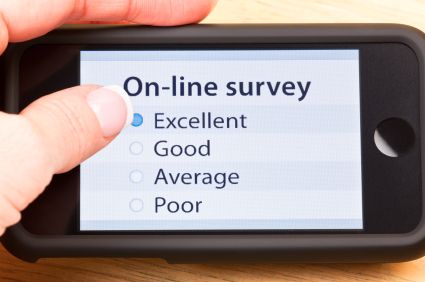-
Five Key Decisions for your Employee Recognition and Incentive Program
April 29, 2015We seem to be in a “rewards” economy, with participants constantly asking “What’s in it for me?” It’s difficult to shop, dine out or buy much of anything without being prodded with a reward for doing so: loyalty points, frequent customer apps, secret offers for special customers, “Kohl’s Cash”, “CVS ExtraBucks”, etc.
Your employees live in this economy, too, and are conditioned to look for rewards. Do you
-
Employee Incentive and Rewards Ideas
July 28, 2011 Our experience in employee recognition and on-the-spot rewards in different industries has opened our eyes to the creative ideas introduced by our clients and our client services team.
Our experience in employee recognition and on-the-spot rewards in different industries has opened our eyes to the creative ideas introduced by our clients and our client services team. This idea is one of our favorites. The Raleigh-Durham Airport Authority (RDUAA), a long time client, honors associates who score 100% on the mystery shops Confero conducts at the RDU airport. The airport authority changes the gift over time and tracks which employee receives which item, so that the award item is always fresh and
-
Five Key Considerations for Customer Surveys
July 28, 2011-
 Audience: Consider the audience for your survey. Are you striving for opinions from all customers and target markets? Or would you like to hone in on a particular age segment, such as young adults? Once you select your audience, define your objectives with your target in mind, then craft the survey questions. For a survey that pins down the most valuable data, companies customize question wording, selection, and survey length to best fit the audience.
Audience: Consider the audience for your survey. Are you striving for opinions from all customers and target markets? Or would you like to hone in on a particular age segment, such as young adults? Once you select your audience, define your objectives with your target in mind, then craft the survey questions. For a survey that pins down the most valuable data, companies customize question wording, selection, and survey length to best fit the audience.
-
Approach: Based on your target audience, choose the appropriate survey delivery method, including mail, email, phone, online, or a combination. Older respondents may prefer mail surveys, and may be more willing to complete a longer survey. Busy professionals, on the other hand, may prefer to respond to a five-question survey via mobile device. If you want to reach all segments, offer the survey through different mediums.
-
-
Five Ways to Increase Customer Survey Response: Web or Interactive Voice Response (IVR)
May 17, 2011-
 A concise survey invitation increases response rates. Basics such as good grammar and correct spelling are obvious, but companies also need to consider brief wording. Companies should partner with the survey provider to develop a unique invitation that will capture customer’s attention and encourage them to respond.
A concise survey invitation increases response rates. Basics such as good grammar and correct spelling are obvious, but companies also need to consider brief wording. Companies should partner with the survey provider to develop a unique invitation that will capture customer’s attention and encourage them to respond.
-
Communicate how long it will take to complete the survey– and deliver as promised. Differing opinions exist about survey length, and it can be challenging for companies to balance the need for customer feedback in many areas while offering a survey that is not too lengthy. Many times the invitation asks customers to complete a “short” survey, however, when customers dial in or access the link to the survey, they discover that survey completion takes longer than expected. With a long survey, customers may abandon the survey before completion. And worse, they probably will not participate in a future survey based on this one experience.
Our experience shows that surveys with a maximum of 10 questions receive the best response rates. Conduct trials internally and make note of how long the IVR or web survey takes to complete. After completing the internal tests, include how long it will take customers to complete the survey on the invitation.
-
-
25 Reasons for Companies to Gather Intelligence
May 17, 2011Competitive Reasons
1. Measure your competition’s phone skills. You may know how well your employees handle incoming phone requests for information on your company, but do you know how effective the competition’s employees are during phone experiences? Gathering intelligence with competitive mystery shops allows you to measure how well your employees stack up against the competition.
2. Assess competitors’ in-person customer service. It’s equally important to know how your employees rank against the competition in terms of in person customer service experiences. Are there areas where the competition is “wowing” the customers? If so, is it enough to make customers want to buy from the competitor company rather than your company?
3. Learn about competitive product/service offerings. Many times, it isn’t easy to gather information on competitor offers. With competitive mystery shops, mystery shoppers pose as regular customers and therefore can gather objective information on the latest competitor products and services.
